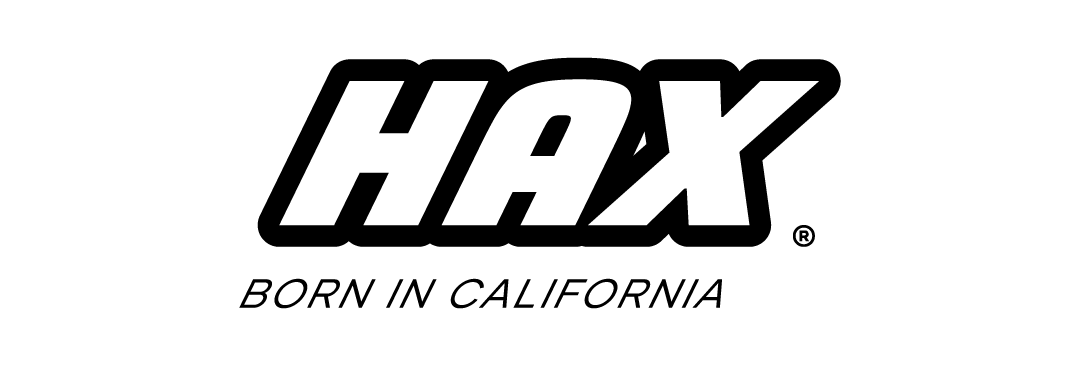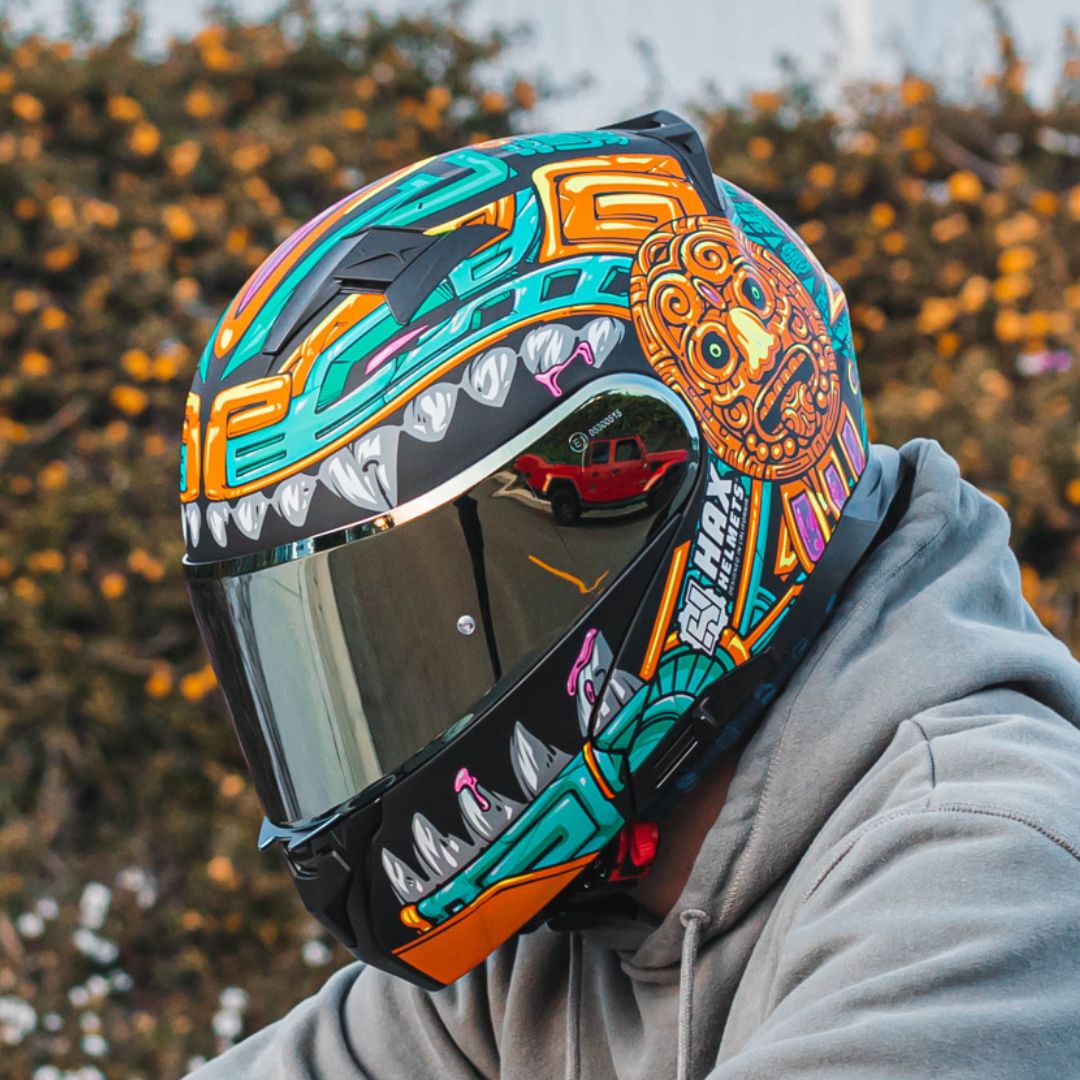Choosing the right motorcycle helmet is crucial for safety, comfort, and performance. A poorly fitting helmet can be uncomfortable, distracting, and even dangerous in an accident. That’s why measuring your head correctly before purchasing a helmet is essential.
In this guide, we’ll walk you through the step-by-step process of measuring for a motorcycle helmet to ensure you get the perfect fit.
Why a Proper Helmet Fit Matters
A properly fitting helmet provides:
✅ Maximum protection by staying securely on your head during an impact.
✅ Comfort by preventing pressure points and discomfort on long rides.
✅ Reduced wind noise and buffeting, improving focus and ride enjoyment.
✅ Better visibility by keeping the helmet in the correct position.
A loose helmet can shift or come off in an accident, while a tight helmet can cause headaches and discomfort.

Step 1: Gather Your Tools
To measure your head accurately, you’ll need:
✔ A soft measuring tape (flexible tailor’s tape works best).
✔ A mirror or a friend to help with measurements.
✔ A helmet size chart (each brand may have slightly different sizing).
👉 No measuring tape? Use a piece of string, wrap it around your head, then measure it against a ruler.
Step 2: Measure Your Head Size
1. Find the Widest Part of Your Head
- Place the measuring tape above your eyebrows and around the widest part of your head, which is typically about an inch (2.5 cm) above your ears.
- Keep the tape level and snug but not too tight.
2. Record Your Measurement
- Take note of the measurement in centimeters or inches, as most helmet brands provide size charts in both units.
- If your measurement falls between two sizes, choose the smaller size, as a helmet should fit snugly and will slightly loosen over time.

Step 3: Find Your Helmet Size
Compare your head measurement to the manufacturer’s helmet size chart. Below is a general helmet size guide (sizes may vary by brand):
| Helmet Size | Head Circumference (inches) | Head Circumference (cm) |
|---|---|---|
| XS | 20.9 – 21.3 | 53 – 54 |
| S | 21.7 – 22.0 | 55 – 56 |
| M | 22.4 – 22.8 | 57 – 58 |
| L | 23.2 – 23.6 | 59 – 60 |
| XL | 24.0 – 24.4 | 61 – 62 |
| XXL | 24.8 – 25.2 | 63 – 64 |
📌 Tip: Always check the specific brand’s size chart, as sizes can vary slightly between manufacturers.
Step 4: Try on the Helmet
Once you’ve selected the right size, it’s time to try on the helmet and check the fit.
How to Put On a Helmet Properly
- Hold the helmet by the straps and slide it over your head.
- The helmet should fit snugly but not cause pain or excess pressure.
- Fasten the chin strap securely.
Fit Check: What to Look For
✅ The helmet should touch your entire head evenly without painful pressure points.
✅ It should feel snug but not overly tight.
✅ Try moving it side to side and up and down—your skin should move with it, but the helmet shouldn’t slide freely.
✅ The cheek pads should be firm; they will break in over time but shouldn’t feel loose initially.
✅ With the chin strap fastened, try tilting the helmet forward—it should not slip off.

Step 5: Check for Helmet Shape Compatibility
Not all helmets fit the same due to differences in head shape. Most helmets are designed for one of these three head shapes:
1. Round Oval
- Equal width and length.
- Best suited for very round heads.
2. Intermediate Oval (Most Common)
- Slightly longer front to back than side to side.
- Fits most riders comfortably.
3. Long Oval
- Noticeably longer front to back and narrower on the sides.
- Best for riders with narrow heads.
📌 Tip: If a helmet feels too tight on the sides or has extra space in the front/back, you may need a different head shape fit.
Step 6: Wear the Helmet for a Few Minutes
- Keep the helmet on for 5–10 minutes to check for any discomfort.
- If you feel hot spots or pressure points, the helmet might be too tight or the wrong shape.
- If it feels loose or shifts easily, you may need a smaller size.
Step 7: Test the Chin Strap & Retention System
- Fasten the chin strap tightly but comfortably.
- Open your mouth wide—you should feel the helmet press against the top of your head.
- Try pulling the helmet off from the back—it should stay securely in place.
Common Mistakes to Avoid
❌ Guessing your helmet size – Always measure before buying.
❌ Buying a helmet that’s too big – A loose helmet won’t protect you properly.
❌ Ignoring head shape – Even the right size won’t fit well if it’s the wrong shape.
❌ Not breaking it in – Helmets loosen slightly over time, so a snug fit is best at first.
Final Thoughts
Finding the right motorcycle helmet size is essential for safety, comfort, and performance. By following these measurement steps and fit checks, you can ensure your helmet provides maximum protection and a comfortable ride.
Key Takeaways:
✔ Measure your head circumference accurately.
✔ Compare with the manufacturer’s sizing chart.
✔ Choose the correct head shape for a better fit.
✔ Ensure a snug but comfortable fit with no excessive movement.
✔ Test for proper retention with the chin strap fastened.
🏍 Now that you know how to measure for a motorcycle helmet, it’s time to find the perfect one for your ride! Stay safe and enjoy the road. 🚀




Leave a comment
This site is protected by hCaptcha and the hCaptcha Privacy Policy and Terms of Service apply.